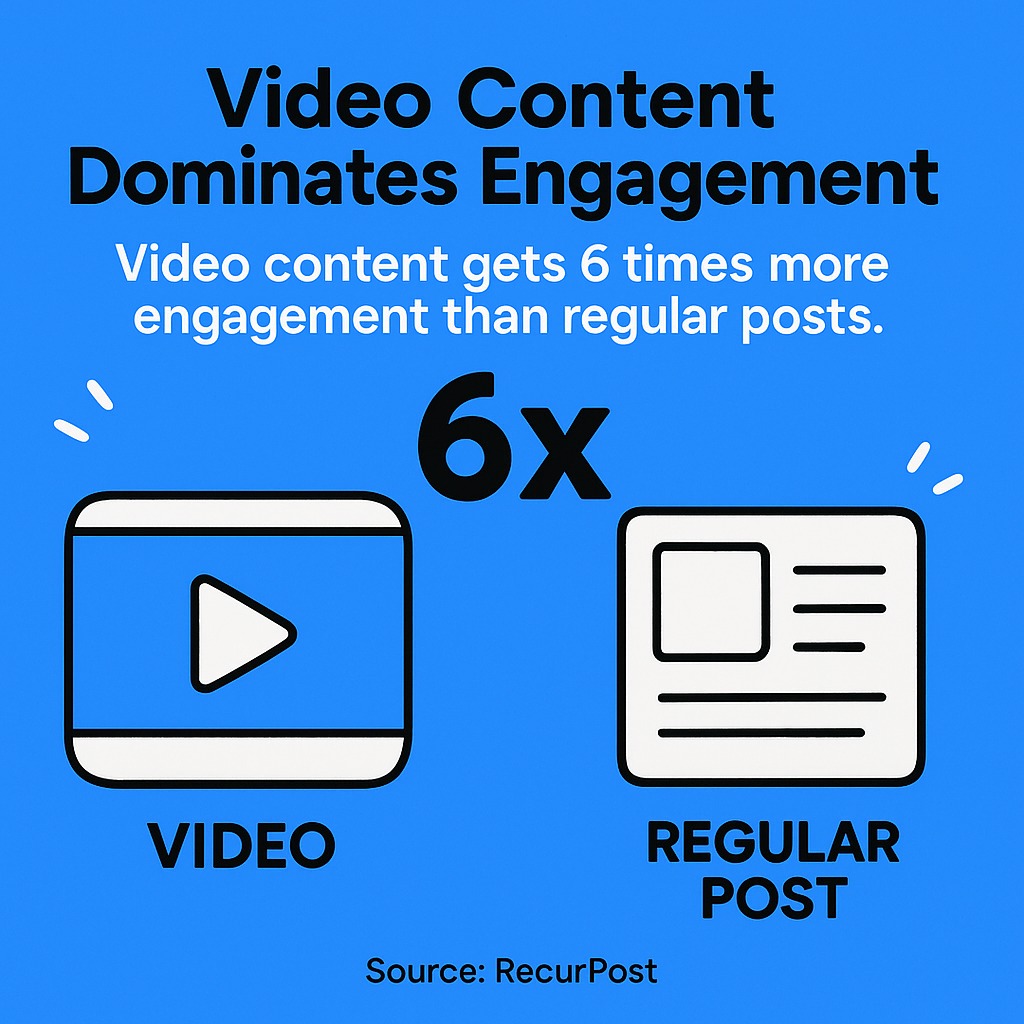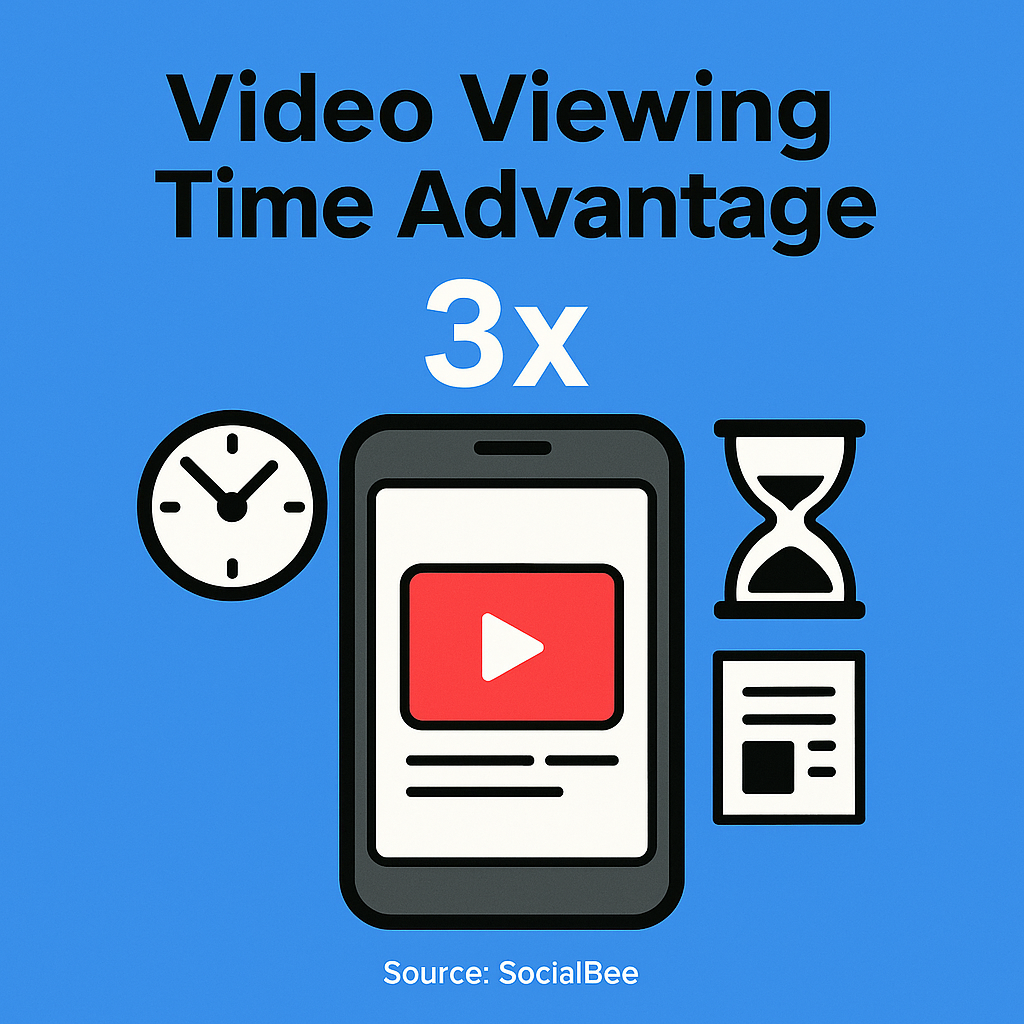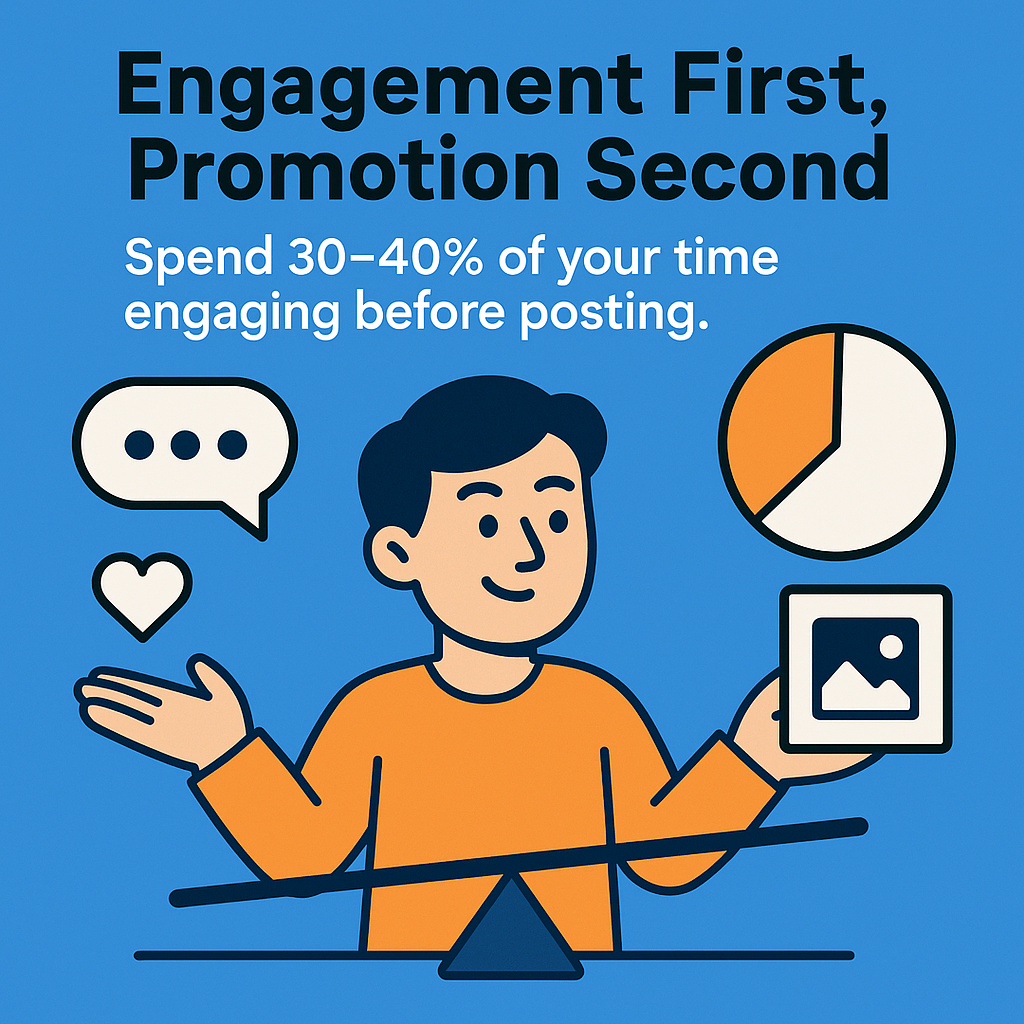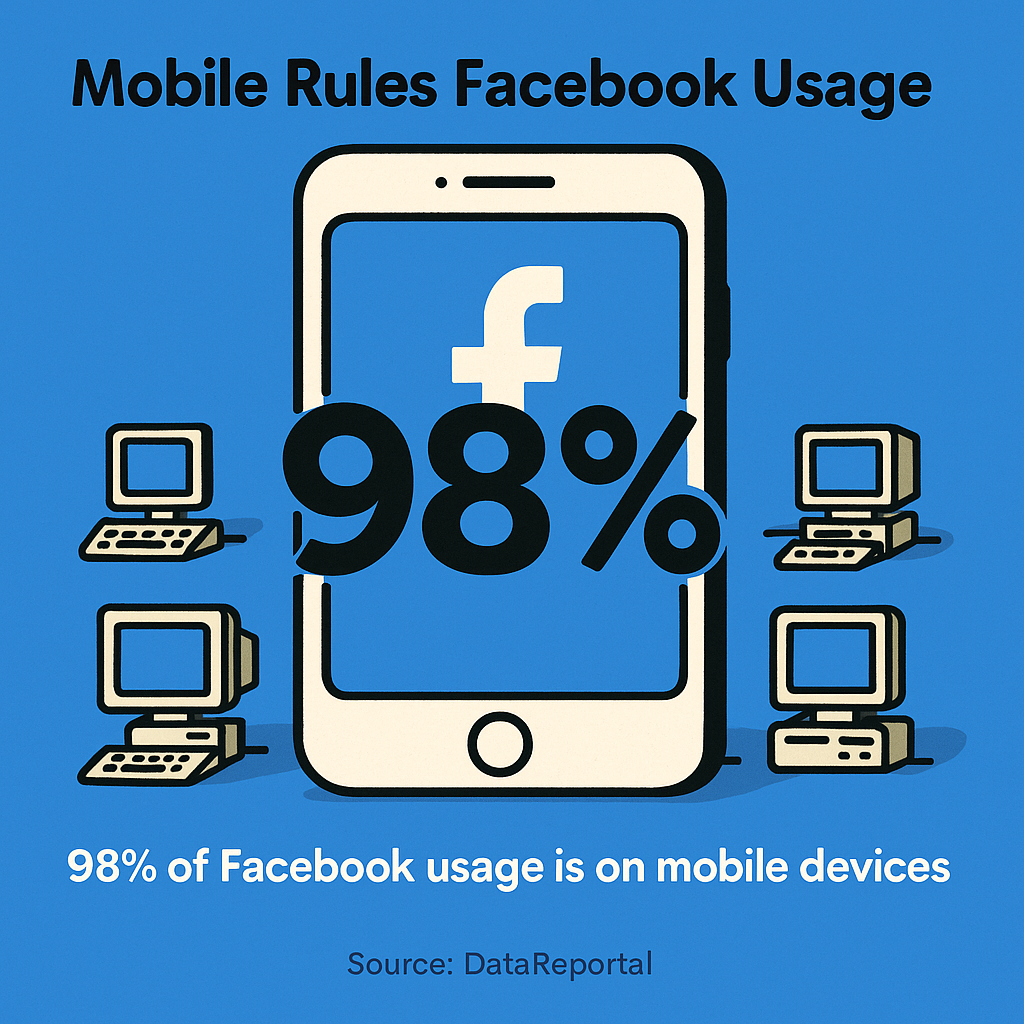10 Tips to Boost Your Facebook Posts Organically
Your Facebook posts are getting about as much love as a pizza slice with pineapple at an Italian family gathering. We get it – Facebook’s algorithm can feel more mysterious than your cat’s midnight zoomies, and reaching your audience organically seems harder than explaining TikTok to your grandparents. But here’s the thing: organic Facebook growth isn’t dead, it’s just gotten pickier about who it hangs out with.

Facebook’s algorithm currently weighs relationship scoring at 35% when deciding who sees your content (Source: Network Solutions). That means building genuine connections matters more than ever, and the days of posting random cat memes and hoping for viral fame are long gone. Smart marketers are adapting their strategies to work with the algorithm instead of against it.
In this guide, we’ll walk you through 10 proven strategies that actually work in today’s Facebook environment. These aren’t your typical “post more often” tips – we’re talking about real tactics that help you cut through the noise and connect with people who genuinely care about what you have to say. Plus, we’ll show you how to automate some of these processes so you can focus on creating amazing content instead of constantly wrestling with posting schedules.
Understanding Facebook’s Algorithm and Organic Reach

Facebook’s algorithm has more mood swings than a teenager, but it follows some predictable patterns. The platform prioritizes content that sparks meaningful conversations and keeps people engaged for longer periods. Video content receives 6x more interaction than regular videos, especially live streams (Source: RecurPost), while posts that generate quick likes and scroll-aways get buried faster than your New Year’s resolutions.
The key insight here? Facebook wants to keep people on the platform, so it rewards content that creates sticky engagement. Think comments that turn into conversations, shares that spark discussions, and posts that make people pause their endless scrolling to actually participate. When you understand this core motivation, everything else starts making sense.
Organic reach might be more limited than it was five years ago, but it’s far from impossible. The brands winning on Facebook right now are the ones who’ve figured out how to create content that feels less like advertising and more like hanging out with a knowledgeable friend. Speaking of which, if you’re looking for a way to keep your content calendar full of engaging posts without burning out, check out our case study on how to get 100,000 Facebook followers in 9 months – it’s packed with real-world examples of what actually works.
Create Engaging Video Content

Video content is like that friend who always knows how to liven up the party – it just naturally draws attention and keeps people engaged. Facebook’s algorithm gives video content significant priority in the news feed, and for good reason: people spend 3x more time watching videos than looking at static posts (Source: SocialBee).
But here’s where most people mess up: they think any video will do. Nope! Facebook rewards authentic, mobile-optimized content that hooks viewers within the first 3 seconds. Your videos need to be optimized for silent viewing (since 85% of Facebook videos are watched without sound), include captions, and deliver value quickly. Think quick tips, behind-the-scenes moments, or mini-tutorials rather than lengthy promotional pieces.
| Video Type | Best Length | Engagement Rate | Best Use Case |
|---|---|---|---|
| Live Videos | 10-30 minutes | 6x higher | Q&As, Product demos |
| Native Videos | 15-60 seconds | 3x higher | Tips, Behind-the-scenes |
| Video Stories | 10-15 seconds | 2x higher | Quick updates, Teasers |
| IGTV/Reels | 30 seconds | 4x higher | Tutorials, Entertainment |
The magic happens when you post videos directly to Facebook rather than sharing YouTube links. Native videos get much better reach because Facebook wants to keep people on their platform, not send them elsewhere. Tools like SocialBee can help you optimize and schedule your video content across multiple platforms while maintaining that native posting advantage.
For those who want to supercharge their content strategy even further, our guide on how to get more engagement on Facebook dives deeper into video best practices and shows you exactly how to create content that people can’t help but interact with.
Optimize Your Posting Schedule
Timing on Facebook isn’t just about when you post – it’s about when your specific audience is most likely to be scrolling, engaging, and ready to have conversations. Posting during peak engagement times like early morning, lunch hours, and after work can significantly boost your visibility (Source: Lantern Co.), but the real winners are those who dig into their own analytics to find their unique sweet spots.
Here’s what most people don’t realize: consistency matters more than perfect timing. Facebook’s algorithm rewards accounts that show up regularly with quality content over those that post sporadically, even if the sporadic posts hit “optimal” times. Think of it like being a reliable friend versus that person who only texts when they need something – the algorithm can tell the difference.
| Time Period | Engagement Level | Best Content Types | Strategy Tips |
|---|---|---|---|
| Early Morning (6-9 AM) | High | News, Quick tips | Catch commuters and early risers |
| Lunch Time (12-2 PM) | Very High | Entertainment, Light content | Target break-time scrollers |
| Evening (6-9 PM) | Highest | Engaging questions, Videos | Peak social media usage |
| Weekend Mornings | Medium | Lifestyle, Inspiration | Relaxed, longer-form content |
The secret sauce? Use Facebook Insights to identify when your specific audience is most active, then batch your content creation and use scheduling tools to maintain that consistency. Buffer and Hootsuite are solid options for scheduling, but honestly, we’re pretty fond of automated content curation that keeps your feed flowing with relevant posts even when you’re busy running your business.
Use Interactive Content Formats
Interactive content is like that magnet on your fridge – it naturally pulls people in and makes them want to participate. Posts that encourage likes, comments, and shares through polls, questions, and contests get significantly more algorithmic love than static announcements (Source: RecurPost). Facebook’s algorithm sees interaction as a signal that your content is worth showing to more people.
The trick is asking questions that people actually want to answer. Skip the generic “How’s everyone doing today?” and go for something specific to your niche. Food bloggers might ask “Pineapple on pizza: yes or no?” while fitness coaches could post “What’s your biggest workout motivation killer?” The specificity makes people feel like their opinion actually matters.
- Polls in Facebook Stories get 2-3x more engagement than regular posts
- Fill-in-the-blank posts encourage creative responses and extended comment threads
- This-or-that questions work great for market research while boosting engagement
- Photo contests with user-generated content create ongoing engagement waves
- Quiz-style posts tap into people’s love of testing their knowledge
Here’s a pro tip that most marketers miss: respond to every single comment on your interactive posts within the first hour. Facebook watches how quickly and thoroughly you engage with your audience, and active community management sends strong signals that your content deserves wider reach. It’s like hosting a party – the better host you are, the more people want to stick around and invite their friends.
If you’re looking for fresh ways to keep your interactive content flowing, our post on fresh ideas for social media offers tons of creative formats you probably haven’t tried yet. Because let’s face it, we all need new ideas when “What’s your favorite color?” starts feeling a bit stale.
Master the Art of Community Engagement

Community engagement isn’t just about responding to comments on your own posts – it’s about becoming a valuable member of the broader Facebook ecosystem. When you actively participate in relevant groups, comment thoughtfully on other pages’ content, and share genuinely helpful insights, Facebook’s algorithm starts viewing you as a trusted community contributor rather than just another brand shouting into the void.
The most successful Facebook pages spend 30-40% of their time engaging with others rather than just posting their own content. This might sound counterintuitive, but think about it: would you rather hang out with someone who only talks about themselves or someone who asks questions, shares interesting stories from others, and contributes to ongoing conversations?
| Engagement Activity | Time Investment | Reach Impact | Relationship Building |
|---|---|---|---|
| Respond to comments | 15 minutes daily | High | Very High |
| Engage in relevant groups | 20 minutes daily | Medium | High |
| Comment on industry pages | 10 minutes daily | Medium | Medium |
| Share others’ content with commentary | 5 minutes daily | Medium | High |
The golden rule? Add value before asking for anything. When you comment on someone’s post, make it meaningful – ask a follow-up question, share a related experience, or offer a helpful resource. Generic comments like “Great post!” are about as useful as a chocolate teapot and won’t help your organic reach one bit.
Smart marketers also use tools like Agorapulse to monitor mentions and relevant conversations across Facebook, making it easier to jump into discussions where their expertise adds genuine value. Speaking of which, if you want to dive deeper into engagement strategies that actually work, check out our detailed guide on supercharging your content’s engagement.
Leverage Facebook Groups Strategically
Facebook Groups are like the secret speakeasies of social media – they’re where the real conversations happen, away from the noise of public feeds. Groups consistently deliver higher engagement rates than page posts, and content shared in relevant groups can reach highly targeted audiences who are already interested in your topic. The key word here is “relevant” – joining random groups just to spam your content is like showing up to a book club to sell vacuum cleaners.
The most effective group strategy involves becoming a helpful community member first and a content promoter second. Answer questions, share valuable resources, and build relationships before you ever think about sharing your own content. Most successful groups have specific rules about self-promotion anyway, but the real magic happens when other group members start sharing your content because they genuinely find it helpful.
- Join 5-10 highly active groups in your niche rather than 50 inactive ones
- Read and follow group rules religiously – moderators have long memories
- Share others’ content more often than your own (80/20 rule works well)
- Provide detailed, helpful answers when people ask questions
- Start valuable discussions with thought-provoking questions
Here’s where most people go wrong: they treat groups like free advertising platforms. Instead, think of groups as networking events where you’re building long-term relationships. The people who get the most value from groups are those who show up consistently, contribute meaningfully, and genuinely care about helping others solve problems. When you do eventually share your content, it feels like a natural extension of your helpful presence rather than an intrusive sales pitch.
Create Shareable Content
Shareable content is the holy grail of organic Facebook marketing – it’s how your posts escape the confines of your immediate audience and spread to new potential followers. But here’s what most people get wrong: they think “viral” means “random.” Actually, the most shareable content follows pretty predictable patterns: it either teaches something useful, makes people feel emotions, or helps them look smart when they share it with their friends.
The psychology behind sharing is fascinating. People share content that reflects their identity and values, helps them connect with others, or provides social currency (making them look knowledgeable or funny). Think about the last post you shared – it probably fell into one of these categories. Smart content creators design their posts with sharing in mind from the very beginning.
| Content Type | Share Trigger | Best Format | Engagement Multiplier |
|---|---|---|---|
| How-to guides | Practical value | Step-by-step posts | 3-5x |
| Inspirational quotes | Emotional connection | Visual with text overlay | 2-4x |
| Industry insights | Social currency | Data-driven posts | 4-6x |
| Behind-the-scenes | Curiosity/authenticity | Photos and videos | 2-3x |
Pro tip: Include a clear call-to-action that encourages sharing, but make it feel natural. Instead of “Please share this post,” try “Tag someone who needs to see this” or “Share your own experience in the comments.” People are more likely to share when they feel like they’re helping someone specific rather than just boosting your metrics.
Visual content performs especially well for shares – posts with images get 2.3x more engagement than text-only posts. Tools like Canva make it easy to create scroll-stopping graphics, while Unsplash provides high-quality stock photos that don’t look like stock photos. For more strategies on creating content that people can’t help but share, our guide on creating super shareable social media content breaks down the science behind viral content.
Optimize Content for Mobile Users

Mobile optimization isn’t just nice to have anymore – it’s absolutely essential since over 98% of Facebook users access the platform via mobile devices. Your beautifully designed desktop post means nothing if it looks like a hot mess on someone’s phone screen. Mobile-first thinking needs to influence everything from your image dimensions to your text length to how you structure your captions.
The mobile experience is all about thumb-stopping content that loads quickly and delivers value immediately. Long paragraphs get scrolled past faster than a terms of service agreement, while bite-sized, scannable content keeps people engaged. Videos need large, clear visuals and bold text overlays since many people watch with the sound off during their commute or in public spaces.
| Content Element | Mobile Best Practice | Desktop vs Mobile Impact | Engagement Boost |
|---|---|---|---|
| Image dimensions | 1080×1080 square format | 2x better mobile display | 35% higher |
| Video length | 15-30 seconds max | 3x completion rate | 40% higher |
| Text overlay | Large, bold fonts | 4x more readable | 25% higher |
| Caption length | 125 characters or less | Fully visible without “…more” | 20% higher |
Here’s something most people miss: test your content on an actual mobile device before posting. What looks perfect on your computer screen might be completely illegible on a phone. The text might be too small, important elements might get cut off, or the call-to-action button might be impossible to tap with a thumb.
Loading speed also matters hugely for mobile users. Heavy images or videos that take forever to load will kill your engagement faster than you can say “buffering.” Optimize your media files for web use, and consider using Facebook’s native image compression rather than uploading massive files that slow down the user experience.
Utilize Facebook Analytics for Data-Driven Decisions
Facebook Analytics is like having a crystal ball for your content strategy – it tells you exactly what’s working, what’s flopping, and what times your audience is most likely to engage. But here’s the thing: most people either ignore these insights completely or get overwhelmed by all the data and don’t know what to focus on. The secret is identifying the 3-4 metrics that actually matter for your goals and tracking those consistently.
The gold mine metrics for organic reach are engagement rate, reach, and audience growth rate. Engagement rate tells you how compelling your content is, reach shows you how far your message is spreading, and audience growth rate indicates whether you’re attracting new people consistently. Everything else is interesting but not essential for day-to-day decisions.
- Check analytics weekly, not daily – daily fluctuations will drive you crazy
- Look for patterns across multiple posts rather than obsessing over single-post performance
- Compare similar content types to see what formats work best
- Track which posting times generate the highest engagement for your specific audience
- Monitor which topics drive the most comments and shares
Here’s where it gets interesting: use your top-performing posts as templates for future content. If your “behind-the-scenes” posts consistently outperform product announcements, lean into that insight. If Tuesday afternoon posts always generate more comments than Friday morning ones, adjust your posting schedule accordingly. The data is telling you a story about what your audience wants – you just need to listen.
Tools like SocialBee and Sprout Social can help you track these metrics across multiple platforms and generate easy-to-understand reports. For those who want to dig deeper into social media analytics, our comprehensive guide on how to increase social media presence covers the metrics that actually move the needle for business growth.
Implement a Consistent Content Strategy
Consistency isn’t just about posting regularly – it’s about creating a recognizable voice, style, and value proposition that makes people excited to see your content in their feed. The most successful Facebook pages are like that friend whose stories you always want to hear: they have a distinctive personality, they’re reliable in their quality, and they always leave you with something useful or entertaining.
Building a consistent content strategy starts with understanding what makes your brand unique and how you can deliver value in ways that only you can. This means developing content pillars – 3-4 core themes that your posts will consistently address. For example, a fitness coach might focus on workout tips, nutrition advice, motivation, and behind-the-scenes content. Every post should fit into one of these buckets.
| Content Pillar | Post Frequency | Engagement Goal | Value Delivered |
|---|---|---|---|
| Educational content | 40% of posts | Comments and saves | Knowledge and skills |
| Entertainment/Personality | 30% of posts | Likes and shares | Enjoyment and connection |
| Behind-the-scenes | 20% of posts | Comments and engagement | Transparency and trust |
| Community/User-generated | 10% of posts | Shares and comments | Belonging and recognition |
The magic happens when people start recognizing your content style before they even see your page name. This brand recognition leads to higher engagement rates because your audience knows they can expect consistent value from your posts. It’s like developing a signature dish – people come to you because they know you do it well.
Content planning tools like Later or CoSchedule can help you map out your content pillars and maintain consistency across your posting schedule. Better yet, consider using a content curation platform that can help you discover and share relevant industry content alongside your original posts, keeping your feed active even when you’re swamped with other business priorities.
For a deeper dive into building a content strategy that actually drives results, check out our guide on successful social media engagement – it’s packed with real-world examples and actionable frameworks you can implement immediately.
Conclusion
Boosting your Facebook posts organically isn’t about gaming the system or finding secret hacks – it’s about understanding what people want and delivering it consistently in ways that spark genuine engagement. The algorithm may seem fickle, but it’s actually pretty straightforward: it wants to show people content they’ll find valuable, entertaining, or worth discussing with their friends.
The ten strategies we’ve covered here work because they align with both Facebook’s priorities and human psychology. When you create video content that stops the scroll, time your posts for maximum visibility, and build genuine community relationships, you’re not just boosting your organic reach – you’re building a sustainable foundation for long-term social media success.
Remember, consistency beats perfection every single time. It’s better to post regularly with solid content than to wait for that “perfect” viral post that may never come. Start with one or two of these strategies, master them, then gradually add more to your repertoire. Your organic reach will thank you, and so will your audience.
The best part? You don’t have to do this alone. Whether you’re looking to streamline your content creation, discover fresh topics to share, or maintain consistency without burning out, there are tools and strategies that can help you work smarter instead of harder. After all, social media marketing should grow your business, not consume your entire life.





